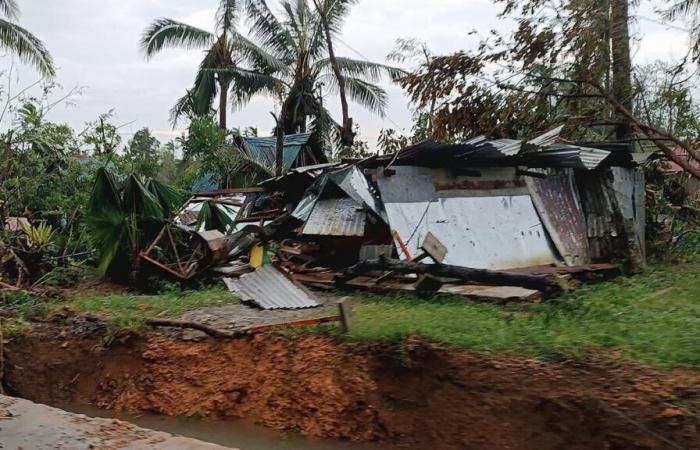Super typhoon Man-yi sweeps the Philippines on Sunday, leaving in its wake uprooted trees, downed power lines and torn-off tin roofs, but no reported casualties, in an archipelago in the grip of its sixth major storm in a month.
• Also read: ‘Potentially catastrophic’: Supertyphoon ‘Man-yi’ set to hit Philippines
Man-yi was still blowing winds measured at a maximum of 185 km/h after making landfall on Saturday evening in the eastern province of Catanduanes. The meteorological agency had reported peaks of 325 km/h.
More than 650,000 people fled their homes as the super typhoon approached, described as “potentially catastrophic and deadly” by the agency.
AFP
Waves up to 14 meters high crashed into the Catanduanes coastline as storm surges of more than three meters are likely to hit Manila and other vulnerable coastal areas within 48 hours, the same warned. source Saturday.
“No casualties were reported, perhaps because people followed evacuation orders,” Roberto Monterola, head of relief operations in Catanduanes province, told AFP on Sunday as the cleanup of the island is underway.
“All towns suffered damage, but those in the north (of the island) are expected to have more problems,” he added.
AFP
“There’s just a breeze and a drizzle now,” Mr. Monterola said.
The municipality of Panganiban, in the northeast of the province, was hit directly by Man-yi.
Photos shared on Panganiban Mayor Cesar Robles’ Facebook page show toppled power lines, damaged homes, trees and corrugated iron sheets littering the roads.
“Pepito was so powerful, I have never experienced such a powerful typhoon,” Mr. Robles assured in a message, using the name given locally to the super typhoon.
“It’s still a little dangerous, there are still gusts of wind and a lot of debris,” he said.
AFP
Sixth storm in a month
Man-yi is the sixth storm to hit the Philippines in less than a month. Previous attacks have killed at least 163 people, left thousands homeless, destroyed crops and killed livestock.
Scientists say climate change is increasing the intensity of storms, leading to heavier rains, flash floods and more violent gusts.
Every year, around 20 major storms and typhoons hit the Philippines or its surrounding waters, killing dozens of people, but it is rare for several such weather events to occur in a short period of time.
AFP
Man-yi is expected to “weaken slightly” into a typhoon before hitting Luzon – the country’s most populous island and economic engine – on Sunday afternoon, according to forecasters.
According to its predicted trajectory, Man-yi is expected to cross north of the capital Manila and sweep across the South China Sea on Monday.
Robert Tancino, a paramedic in Tiwi municipality in Albay province, which faces Catanduanes, said his area appeared largely unscathed.
“There haven’t been too many trees fallen and the roads are clear. I didn’t see any damage to the houses,” Mr. Tancino told AFP.
Man-yi hits the Philippines late in the typhoon season, with most cyclones developing between July and October.
Earlier this month, four storms formed simultaneously in the Pacific basin. The Japanese meteorological agency told AFP on Saturday that this was the first time such a phenomenon had been observed in November since its records began in 1951.
AFP






